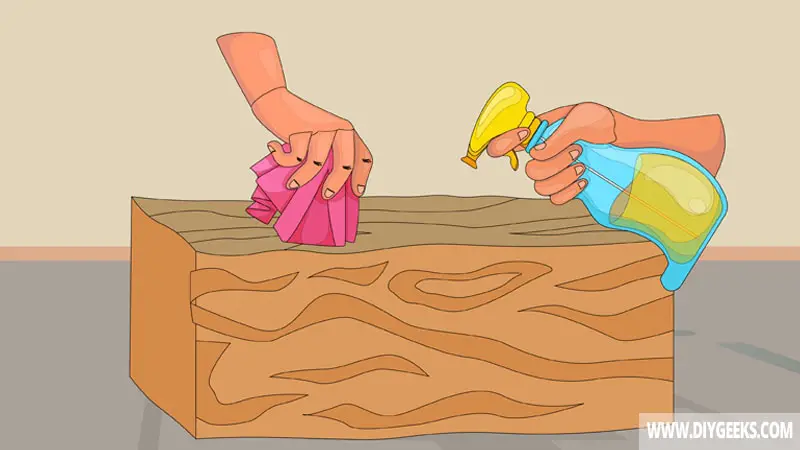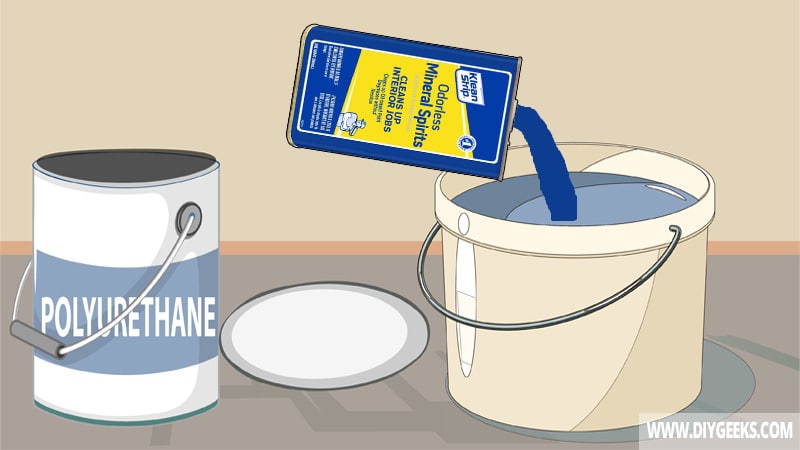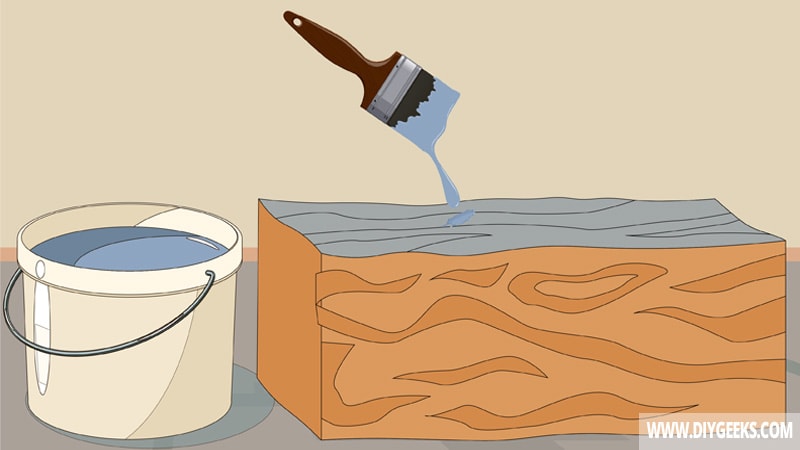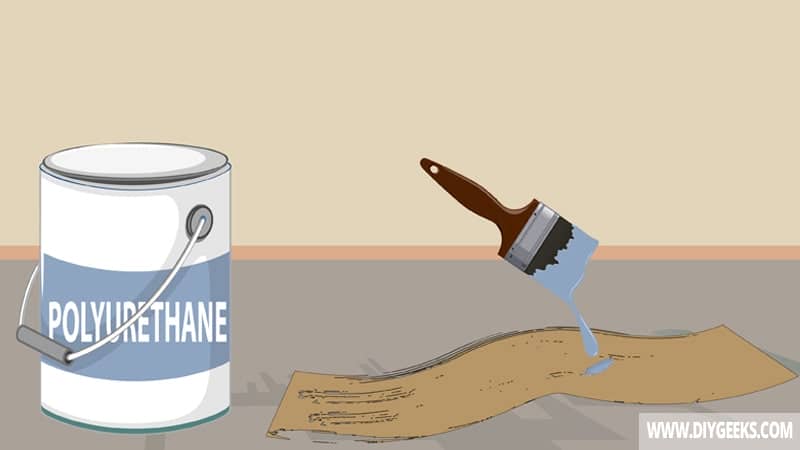You can apply polyurethane over Linseed oil as the sealer doesn’t need to penetrate the surface to stick. But, Linseed oil must be fully dry before you apply the polyurethane.
To apply polyurethane over Linseed oil, clean and sand the finish, thin polyurethane, and apply the polyurethane.
You can’t apply linseed oil over polyurethane because linseed oil is a penetrating finish (it needs to penetrate the surface to stick), while polyurethane prevents liquid from penetrating its surface.
Does Polyurethane Adhere Over Linseed Oil?
Polyurethane does adhere over Linseed oil, but the finish must be dry and sanded before sealing it. If you seal it too soon, both finishes will mix and create a rich oil varnish that won’t harden or cure.
You must sand linseed oil with ultra fine-grit sandpaper before sealing it. Sanding will remove the dirt and imperfections from the finish, allowing the sealer to stick better.
Thin oil-based polyurethane with mineral spirits before applying it over Linseed oil to improve the bonding between both finishes. The thinner (lighter) the flow is, the better it will stick and the faster it will dry.
Oil-based polyurethane sticks to linseed oil better than water-based polyurethane because their solvents (oils) are compatible. You must apply a thin coat of oil-based primer if you want to use water-based polyurethane.
Polyurethane sticks to boiled Linseed oil as it dries faster than raw Linseed oil. If you want to seal raw Linseed oil, you must wait several weeks for it to fully dry.
How To Apply Polyurethane Over Linseed Oil?
To apply polyurethane over Linseed oil, do the following things.
- Clean and Sand the Linseed Oil.
- Thin Polyurethane.
- Apply Polyurethane.
The tools you need for this project are listed below.
- A bristled paintbrush
- A pair of gloves
- Paint thinner or mineral spirits
- Clean rags
- Fine and ultra-fine grit sandpaper
1. Clean and Sand the Finish

To clean the Linseed Oil finish, do the following things.
- Wait for the linseed oil to dry.
- Damp a clean rag with soapy water.
- Wipe the dampened rag over the coating.
- Wait 2 minutes.
- Remove the soapy water from the finish.
- Allow the surface to dry.
Sand the Linseed oil finish after you clean it to remove surface imperfections and bumps, and leave behind a textured finish.
To sand Linseed oil before sealing it, use fine-grit sandpaper (220-grit). Don’t use medium or coarse-grit sandpaper as it will damage (or remove) the entire finish. Clean the finish (again) with a rag after sanding it.
2. Thin Polyurethane

Thin polyurethane before applying it over Linseed oil so you can apply thin coats. Un-thinned polyurethane has a thick viscosity and can create a thick coating that can cover the original Linseed oil color shade (unless that’s what you want).
To thin oil-based polyurethane, use mineral spirits. To thin water-based polyurethane, use water. Thin it in a 4:1 ratio (4 parts polyurethane, 1 part paint thinner).
3. Apply Polyurethane

Apply three (3) thin polyurethane coats over the Linseed oil using a paint roller or sprayer. Wait until one coat dries, sand between coats, and apply the next coat.
Use water-based polyurethane for interior surfaces and exterior polyurethane for exterior surfaces.
Can You Mix Linseed Oil and Polyurethane?
You can’t mix linseed oil and polyurethane as they are different types of topcoats and have different additives. A mixture of them will produce a thick coat that is hard to apply and won’t dry.
Both finishes have a different dry time — one part of the mixture will dry while the other will remain wet for several days, leading to a cracked finish. Polyurethane dries within 24 hours, while linseed oil requires several days to dry.
Linseed oil is a penetrating topcoat, while polyurethane is a topical topcoat (it doesn’t need to penetrate to stick). So, the mixture won’t stick properly to surfaces.
A mixture of polyurethane and Linseed oil will produce a yellow tint over the finish due to the high volume of oils. If you apply the mixture to a wooden surface, the surface will have an amber-tone finish that won’t dry.
Can You Apply Linseed Oil Over Polyurethane?
You can’t apply linseed oil over polyurethane as it won’t stick unless you remove the sealer first. Linseed oil is a penetrating finish, and polyurethane coating prevents liquids from penetrating its surface.
The wood oil won’t be able to penetrate the coating or stick if you apply it over polyurethane. This will lead to a sticky or tacky finish.
You must sand the polyurethane first to create tiny ridges (holes) that the linseed oil can penetrate into. This allows it to stick, but the bonding between them won’t be good.
So, the best way to apply it is to remove the polyurethane top layer first and then apply the wood oil.


